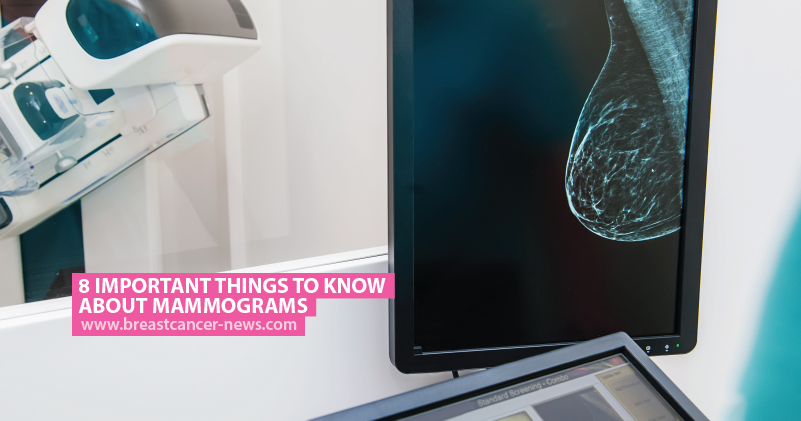When a woman has a mammogram, the radiologist analyzes the breast tissue to check for signs of breast cancer. We’ve put together a list of eight important things to know about mammograms based on information from breastcancer.org.
1. Regular mammograms can detect breast cancer early. Catching breast cancer when it’s at an early stage can reduce the risk of dying from the disease by up to a third. Mammograms are the most reliable method of detecting breast cancer and will catch 80 percent of cases.
2. There are different types of mammograms. If you have large breasts or are under the age of 50, you will have more breast tissue. Try to get a digital mammogram which will allow the radiologist to zoom into the image to see the breast tissue more clearly.
MORE: Experienced radiologists can detect breast cancer on mammograms in split seconds
3. Bring results of previous mammograms. This way, radiologists can compare the images and see any changes from one mammogram to the next.
4. Some screening facilities now have computer-aided detection (CAD). This advancement in breast screening allows radiologists to look even more closely at the breasts and pay attention to any areas of concern.
5. Don’t wear deodorant or antiperspirant when you go for your mammogram. Underarm deodorants and antiperspirants can interfere with the images, making them harder to read.
MORE: Older women benefit from mammograms in detecting breast cancer
6. A mammography is the not the only way to detect breast cancer. As important as routine mammograms are, they can miss up to 20 percent of breast cancer cases. Women should also perform self-exams and go for other screening tests — ultrasounds and MRIs can be used in addition to a mammogram.
7. Women should have a mammogram annually from the age of 40 onwards. If there is a family history of breast cancer or ovarian cancer then you should start mammograms from the age of 30. The earlier you start screening, the more chance you have of catching breast cancer early.
8. A mammogram result requiring further tests doesn’t automatically mean you have breast cancer. Approximately 10 percent of women will need further tests, such as a biopsy or MRI scan, to rule out cancer but the majority of women will still be cancer-free.
MORE: What to expect when you’re having a mammogram
Breast Cancer News is strictly a news and information website about the disease. It does not provide medical advice, diagnosis or treatment. This content is not intended to be a substitute for professional medical advice, diagnosis, or treatment. Always seek the advice of your physician or another qualified health provider with any questions you may have regarding a medical condition. Never disregard professional medical advice or delay in seeking it because of something you have read on this website.

